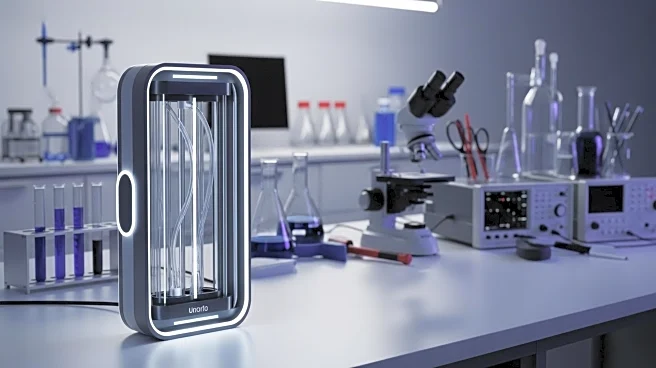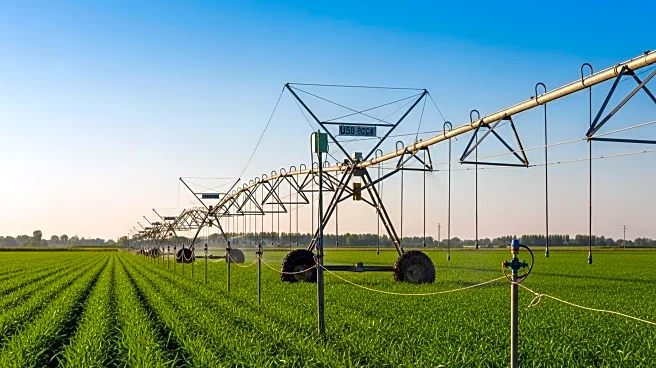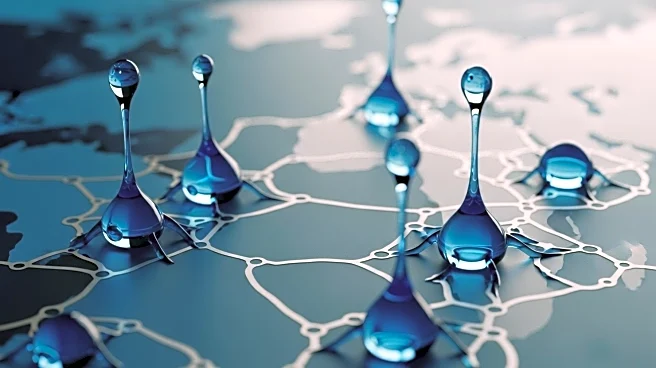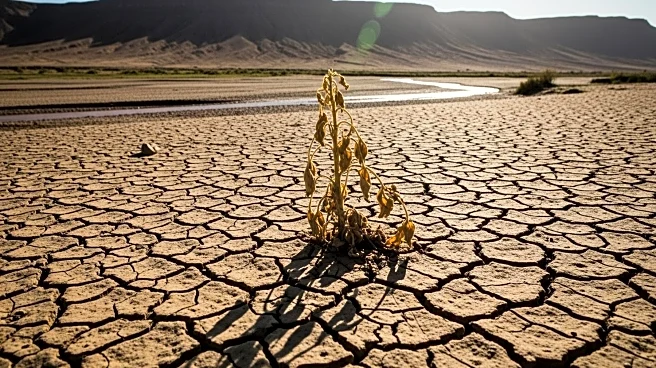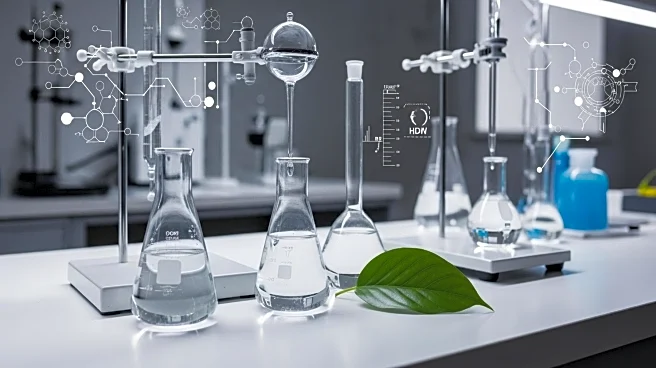What's Happening?
An international team of engineers has developed a window capable of extracting drinking water from the air, even in extremely dry climates. This innovation was showcased at the 2025 Gizmodo Science Fair, where it won a prize for its compact and self-sustaining design. The window utilizes a hydrogel made from a hydrophilic polymer network and hygroscopic salts, which absorb moisture from the air. The hydrogel is placed between two sheets of glass, functioning like a window. At night, when temperatures drop and humidity rises, the hydrogel collects water vapor. During the day, sunlight heats the window, causing the stored water to evaporate and condense on the glass. A tube at the bottom collects the condensation. In a test conducted in Death Valley, the driest location in the U.S., the window collected up to two-thirds of a cup of water per day.
Why It's Important?
This development is significant as it offers a potential solution to water scarcity issues, particularly in arid regions. By harnessing natural processes and requiring only sunlight, the technology could provide a sustainable source of drinking water without relying on traditional water supply systems. This could have profound implications for communities in desert areas, reducing dependency on external water sources and enhancing resilience against droughts. Additionally, the technology could be adapted for use in other regions facing water shortages, contributing to global efforts to address water scarcity and improve access to clean water.
What's Next?
Further testing and refinement of the technology are likely to follow, with potential scaling for commercial use. Stakeholders such as environmental organizations, governments, and water management agencies may express interest in the technology for its potential to alleviate water scarcity. The engineers may seek partnerships or funding to advance the development and deployment of the window system. Additionally, regulatory approvals and market assessments will be necessary to ensure the technology's viability and integration into existing water infrastructure.
Beyond the Headlines
The ethical implications of this technology include considerations of equitable access to water resources. As water scarcity becomes a pressing global issue, innovations like this could play a role in ensuring that vulnerable populations have access to clean water. The technology also raises questions about the environmental impact of manufacturing and deploying such systems on a large scale. Long-term shifts could include changes in water management policies and increased investment in sustainable water technologies.

